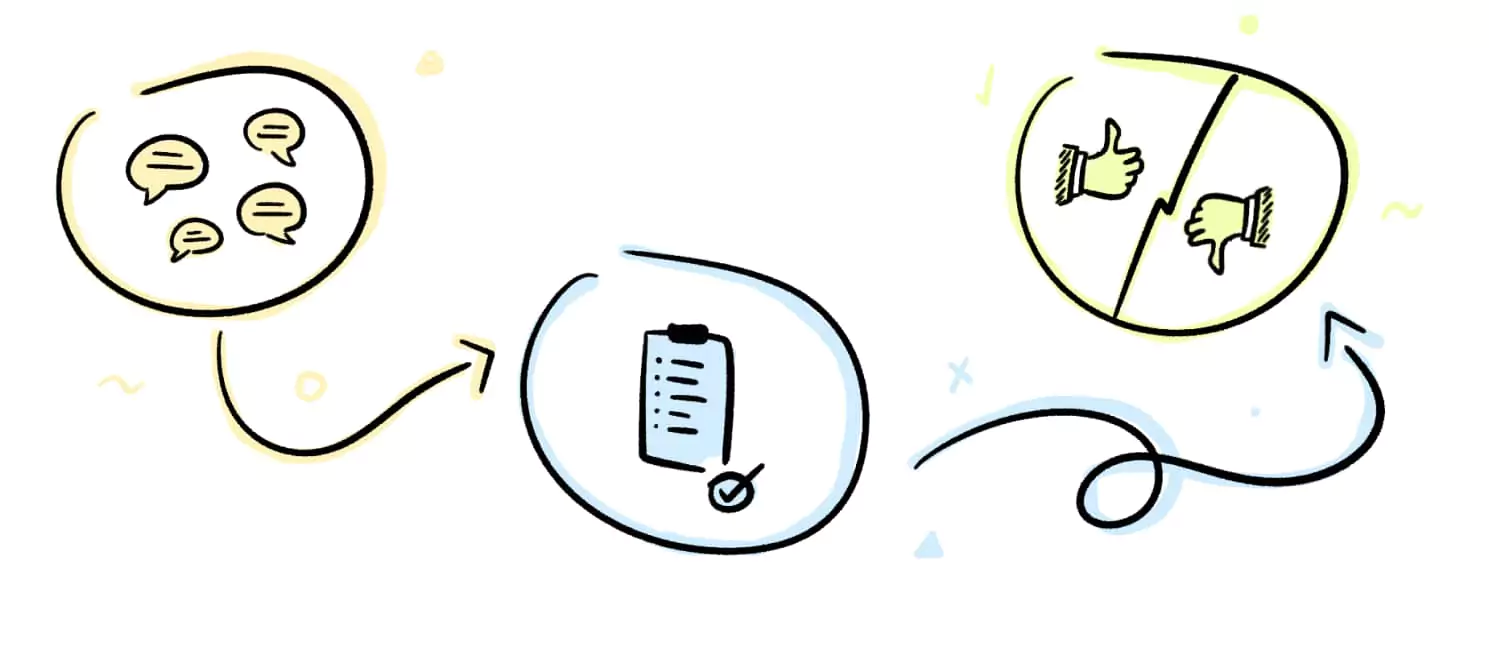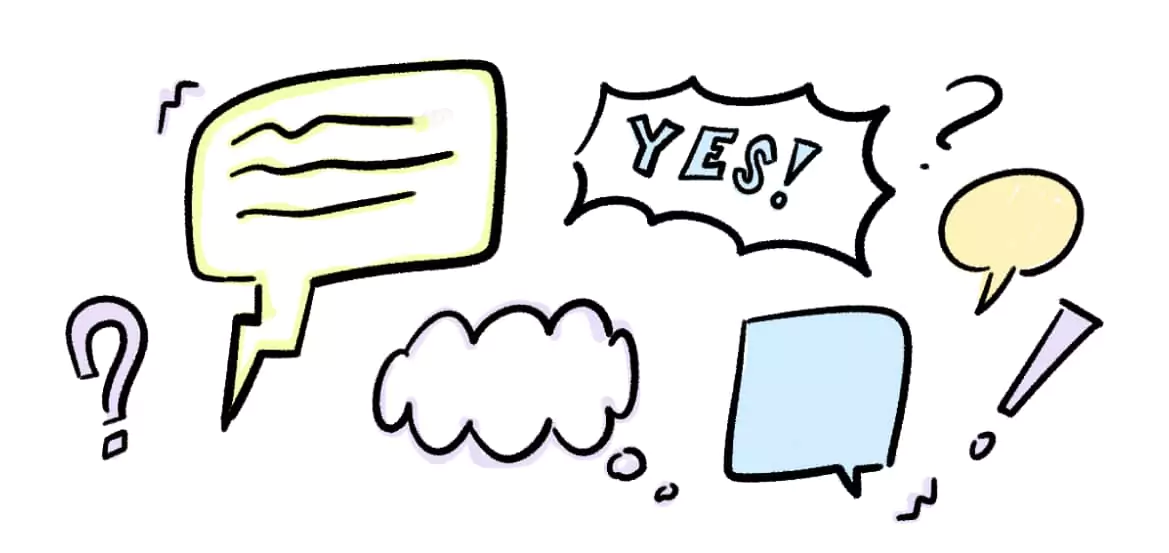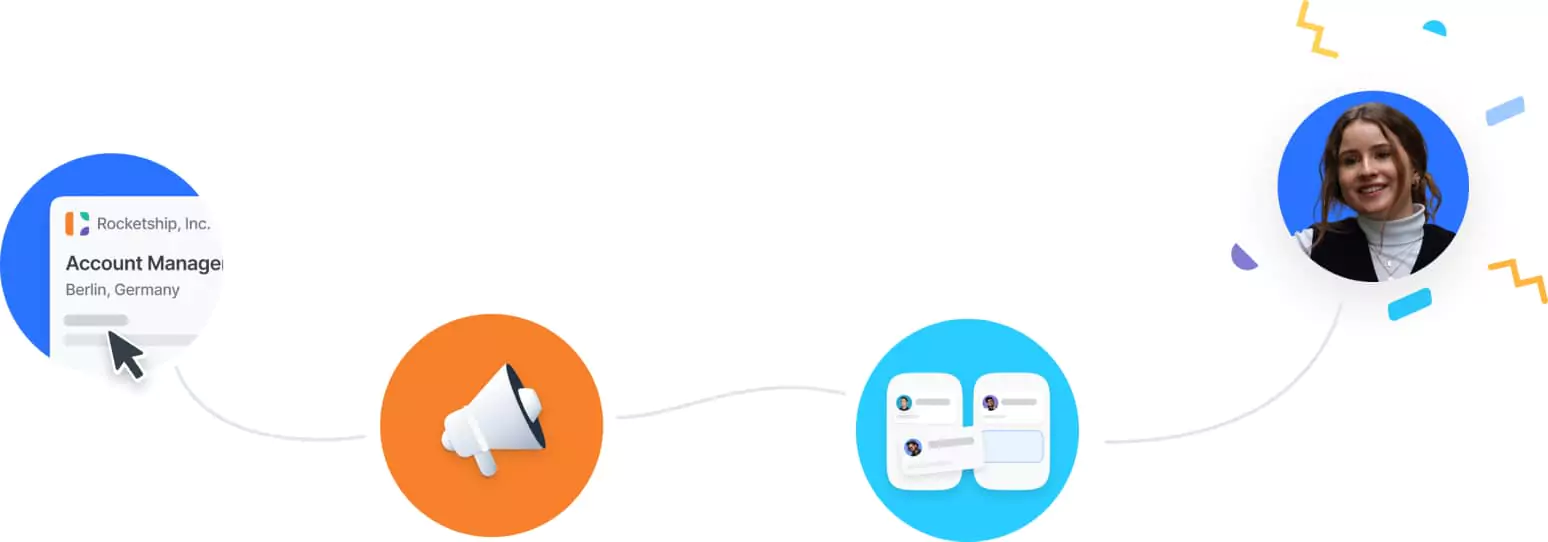Part 1
The stages of the interview process

The interview process includes much more than just the interviews themselves. Before you invite a candidate, you want to define the structure and different stages of your process and outline what is needed at every step. This ensures efficiency and consistency, leading to a faster, better-streamlined process.
Now there are many ways in which you can interview a candidate. And your interview process can (and most likely will) include a combination of multiple different interview types.
Overview of the most common interview types and elements:
1:1 interview
Just the candidate and one interviewer
Group interview
Several candidates being interviewed at the same time
Panel interview
The candidate and several interviewers
Unstructured interview
Questions asked depend on the answers the candidate gives
Structured interview
Questions are fixed, picked beforehand, and the same for each candidate
Informal interview
A casual conversation rather than a formal interview, often held off-site, like in a coffee shop
Face to Face interview
Can be either in the office or off-site
Phone interview
Phone call, generally between one interviewer and the candidate
Video interview
Virtual interview via video-conferencing tools such as Zoom
Written interview
This could be through a pre-screening survey or via email, often used as a form of blind hiring
Behavioural interview
Questions aimed at assessing how a candidate would deal with a situation
Competency-based interview
Questions aimed at assessing skills and experience
Cultural fit or add interview
Questions aimed at assessing how a candidate might fit in with or add to the company culture
Stress interview
The interviewer purposefully asks odd questions to see how the candidate deals with stress
Case interview
The candidate is given a realistic business situation that they have to solve
Interviews often contain a mix of two or more of these elements, while the process as a whole will contain several interviews.
Throughout this guide, we’ll explain which type of interview is the best suitable for each stage of the process, and how you can best use each type to your advantage. Since every organisation, industry, and position you’re hiring for is different, what steps need to be included in the interview process can vary.
However, there is a common structure that companies tend to follow. This includes the following five interview stages.
Stage 1
Screening
The first stage is generally an initial screening interview that follows after you selected one or more potential candidates from the applications you received. This interview aims to assess if the candidate has the basic skills to perform the role and if they have the right expectations of your business.
We use JOIN to easily screen candidate applications, collaborate internally with the team to come to a decision, and then communicate the outcome with the candidate. All within the same tool!
Francesca Sacchi
Teamlead Patient Care Italy & France, Fertilly
The screening interview stage is normally done one-on-one, by phone or by video call, and is kept relatively short (around 15 minutes). It helps the hiring manager or recruiter quickly narrow down the number of applicants, which is called shortlisting.
Screening interview questions tend to focus on assessing a candidate’s hard skills and practical work experience.
Stage 2
First interview
After a round of screening interviews, you will end up with a shorter list of candidates that seem suitable for the position. Now it’s time to really get to know them and test whether they would work well within your organisation.
This stage is often still done one-on-one, although it will often involve a different stakeholder. For example, screening is typically done by a recruiter or HR employee, while the first interview tends to involve the team lead who will be directly managing the new hire.
At this stage, video or in-person interviews are better as they help you build rapport with the candidate more easily than during phone interviews
Interview questions will be more tailored to finding out how the candidate might actually perform the tasks specific to the role and your organisation. You will also try to dive deeper into their work experience (beyond just bullet points on their CV).
Furthermore, you will simultaneously focus more on getting to know their personality and how they might work within your team.
Stage 3
Second interview
You’re really starting to narrow it down now! At this stage, you should only have a few candidates left who are all serious contenders for the position.
The second interview is generally done with more than one interviewer (panel interview) and often involves the candidate meeting their direct team. For in-person interviews, a tour through the office might be included and, in some cases, even a team lunch (either on or off-site).
There are no set rules on the number of candidates you should invite for each stage, and the number will depend on the role and urgency of hiring. But as a rough guide, you should by now have about 2-3 serious contenders left for the role.
Interview questions are typically more behavioural and situational (see the interview question type examples for more information) to further get to know the person and their way of working.
Stage 4
Third interview
Many companies skip this step and combine it with the previous one. Whether you want to have two or three interviews in your process will depend on factors such as the seniority, complexity of the role, and urgency of the hire.
We always recommend adding this step to raise your chances of finding the perfect candidate. It’s one extra interview now, but it can save you from having to repeat the entire process from the start in case of a bad hire.
The content of this interview may vary, but often some form of skill assessment or business case is presented to the candidate, which they either finish before or during the interview (case interview). For example, they might be given a business case that they then present during their interview. This interview can be done both virtually or in person.
Interview questions may be related to the task, or be more situational in nature. Meaning, these questions are asked with the candidate being hired in mind.
Stage 5
The hiring decision
The final stage is where you reach a final decision: To hire or not to hire. The interview process will officially be finished as soon as you send out a job offer.
Any contract negotiations and additional communication between you and the candidate will fall within the broader hiring process, but not within the interview process. As soon as the contract is signed, the onboarding process starts.
The 5 stages of the interview process
What?
Short phone/video call (15 min)
What?
1:1 interview, in person or virtual (30 min)
What?
Panel interview, meet the team, in person or virtually (1+ hour)
What?
Panel and case interview, often in person (1+ hour)
Why?
Narrow down the number of potential candidates
Why?
1:1 interview, in person or virtual (30 min)
Why?
Assess how the candidate will fit into the company and role
Why?
Further assess compatibility with the company and role
Screening
What?
Short phone/video call (15 min)
Why?
Narrow down the number of potential candidates
1st interview
What?
1:1 interview, in person or virtual (30 min)
Why?
1:1 interview, in person or virtual (30 min)
2nd interview
What?
Panel interview, meet the team, in person or virtually (1+ hour)
Why?
Assess how the candidate will fit into the company and role
3rd interview
What?
Panel and case interview, often in person (1+ hour)
Why?
Further assess compatibility with the company and role
Easily manage and move candidates through the steps of your interview process with JOIN!
Sign up – it’s free!
















